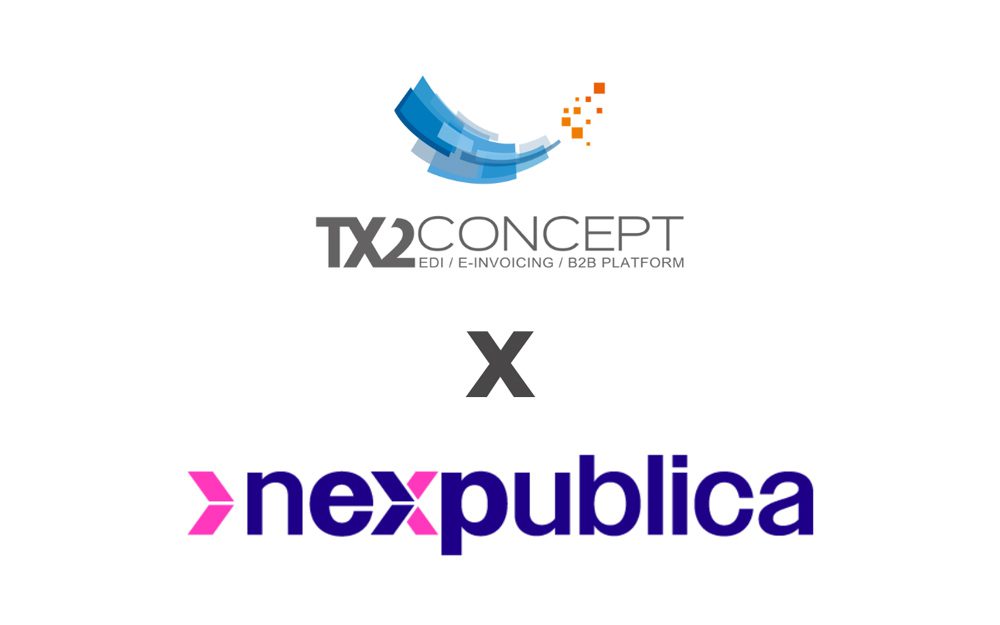As a reminder, an invoice is an accounting document that certifies the purchase or sale of a good or a service. That is, proving a customer’s debt to a supplier. It materializes a commercial transaction in addition to the order, the delivery slip or any other document of this type.
An invoice has different roles and must contain a certain number of mandatory legal notices that we will see together.
With the digitization of companies and processes, more and more players are dematerializing all or part of their commercial, logistical and / or administrative documents. This is particularly the case of invoices. For more than 10 years, an increasing development of electronic invoice has been observed.
Let’s take a look at why it is worth switching to, what options are available to you, and how to set them up.
The roles of the invoice
The invoice, regardless of its format, has an essential role. It has different functions for a company:
- Commercial because it incorporates the elements agreed between the parties.
- Accountable because it contains the sums due and the nature of the goods and / or services sold.
- Fiscal because it specifies the rates and amounts of VAT.
- Legal because it serves as evidence in the event of a dispute to prove that one or the other of the parties is right. Provided that it is compliant and that it includes the mandatory legal notices that we will see now.
Invoice: List of mandatory legal notices
In order to be considered legally compliant, an invoice must contain certain mandatory information:
- The business name and full address of the seller;
- The supplier’s individual VAT identification number;
- The identification number and the RCS mention followed by the name of the city where the registry office is located;
- The unique number of the invoice;
- The date of the invoice;
- The business name and full address of the buyer;
- The buyer’s VAT number;
- The date of the operation;
- The due date, the conditions of discounts, penalties and lump sum compensation;
- The precise name of the goods sold or services provided;
- The quantity of products invoiced;
- Price reductions;
- The unit price excluding VAT;
- The VAT rate;
- The VAT summary by VAT rate;
- The total amount excluding tax;
- The total amount of VAT;
- The corporate name of the head office, its legal form and its share capital associated with the currency.
Now that we’ve covered the basics of invoicing, let’s see why you should switch to invoicing dematerialization.
The advantages of tax invoices dematerialization
Are you a paper invoices user and wondering why you should change your methods?
To begin, the electronic invoice allows you to reduce your administrative costs. How? By eliminating paper, printing, postage, re-entry and reducing the risk of lost documents, you save money. In addition, you also reduce your archiving costs because you no longer need a physical place of storage.
Concretely, this considerably reduces the cost of an invoice. Generally speaking, an outgoing invoice costs €6.45 less electronically than in paper format while an incoming invoice will cost €10 less electronically. The cost here corresponds to all costs related to invoicing such as printing, envelope, sending, reminders for payment, dispute management, payment, archiving and other processing. *
Dematerialization also allows you to automate your processes. You speed up data processing, reduce the risk of errors and make your information more secure. Likewise, access to and tracking of invoicing information is improved. The data is centralized and immediately accessible. In addition, the traceability of your invoices is ensured.
Then, it allows you to improve your relations with your commercial partners thanks in particular to the reliability of the data, the faster processing and the reduction of disputes. Electronic invoicing also allows you to meet the requirements of your major contractors.
* Sources: Arthur D. Little study on behalf of Deskom in 2004 and Billentis study in 2013.
But in short, what is an electronic invoice?
Unlike a classic paper invoice, an electronic invoice is created, issued, received and stored in electronic format. That is, it does not exist in paper format, the original is in electronic format. A scanned paper invoice is therefore not considered an electronic invoice.
For an electronic invoice to be compliant, three main principles must be guaranteed:
- The authenticity of the origin which guarantees the identity of its issuer;
- The integrity of the content which guarantees that the data has not been altered;
- The readability of the invoice.
The three methods to exchange electronic invoices
There are three ways to exchange electronic invoices with your business partners to make them legally compliant:
The first method: the audit trail. Here you send your electronic invoices in the format agreed with your partners. To prove the compliance of these invoices, you must be able, in the event of an audit by the tax authorities, to prove that you have checked the said invoices. We will see how to do this type of control a little further down.
The second method is the electronic signature. In this case, you send your invoices electronically in the same way in the format agreed with your business partners. This time it is an electronic signature that will secure your invoice. We explain how to set it up right after.
Finally, the last method is the complete EDI. This method differs because your invoices are exchanged by EDI via a communication channel and a standardized structured format agreed with your partners.
Note that your mode of exchange may be different from those of your partners. It can also be different on your side from one business partner to another.
How to choose between these three options?
As we explained to you previously, you can combine several electronic invoice exchange methods. You are then able to adapt to the technical needs of your partners by offering them flexibility regarding the invoice format.
It is by carefully analysing your needs as well as those of your customers and / or suppliers that you will determine the most suitable solution.
How to set up the audit trail?
Clearly, the audit trail means being able internally to check the consistency and completeness of your invoices compared to your other commercial documents. For example, making sure that the data on an invoice matches the data on the corresponding order.
The audit trail controls
To do this, organized and permanent controls must be put in place. They must ensure that the invoice data is complete and correct. They must not have been modified. It is also important to check that it is sent to the right person at the right time and that all the mandatory information is included. This list is not exhaustive, to see the other checkpoints you can consult the impot.gouv site.
Your controls must be documented. Thus, in the event of an inspection by the tax authorities, you can prove that your inspections have been carried out. This documentation must include all the supporting documents for the invoicing process from the order to the archiving of documents.
The audit trail: Items to archive
As with paper invoices, commercial law requires you to keep the original invoice for 10 years. As part of the audit trail, you must also keep all the documentation that enabled your internal controls.
How to set up the electronic signature?
The electronic signature makes it possible to identify the origin of an invoice and to guarantee its integrity. Before opting for this method, let’s see what elements to consider.
Prerequisites and functioning of the electronic signature
First of all, you must have the consent of your business partner before sending them signed electronic invoices. This method implies that the recipient of the invoice is able to verify the validity of the electronic signature. If this is the case, the invoice issuer must acquire a qualified electronic certificate from a certification authority and a secure signature creation device.
To put it simply, when sending the invoice, the issuer signs it electronically using its secure signature creation device. This creates a “unique fingerprint” that matches the electronic signature. The recipient then receives the invoice, the electronic signature and the electronic certificate. These elements allow him to verify the validity of the signature.
Electronic signature: Items to archived
With this exchange method, you must keep the invoice, the associated electronic signature and also the electronic certificate for a period of 10 years.
How to set up complete EDI?
Using complete EDI as a method of exchanging invoices is like automatically exchanging structured sets of data called “messages” between two ERP-type information systems. This avoids re-entries which can be a source of errors. The invoices are then integrated directly into the recipient’s information system.
Prerequisites and operation of the complete EDI
To do so, you must be equipped with a “complete EDI” solution for invoicing to feed a file of your partners as well as a summary list of your exchanged documents. Your system must allow your invoices to be returned in the clear, that is to say in a readable form.
To go into detail, before sending, the issuer’s system checks the conformity of the invoice and transmits it to the recipient by feeding the summary list. On receipt, the recipient’s system verifies compliance and also feeds the summary list.
This list must include certain mandatory information: the number and date of the invoice, the date and time of the message, the amounts excluding tax and applicable taxes, the identification elements of the sender or receiver as well as the version of the software used.
Complete EDI: Items to archive
Invoices in structured format must be archived with the summary lists and the file of your partners. During a tax administration check, you must be able to present invoices to them in a readable format.
TX2 E-INVOICING: Tax invoice dematerialization solution
Our electronic invoicing solution allows you to dematerialize your invoices for tax purposes in any format (EDI, XML, PDF, etc.).
This solution is suitable for supplier and customer invoices as well as invoices issued to the public sector.
You manage the sending and receiving of your invoices and payments. You can save and archive them according to the legal deadlines. And you can also track your flow exchanges and view your invoices in PDF format.
Your customer invoices are sent to your recipients in compliance with legal constraints. This involves translating a file into an invoice in EDI format recognized and integrable by your customers. These PDF electronic invoices can be exchanged via the electronic signature method to guarantee their legal value.
Regarding supplier invoices, they are directly integrated into your ERP, after a phase of character recognition and information translation.
Finally, concerning invoices intended for the public sector, you certainly know that since January 1, 2017, invoices intended for the State, local authorities and public establishments must be dematerialized and exchanged via the Chorus Pro platform. Our solution allows you to interface automatically to this platform. You can send your invoices in EDI or PDF format easily and in compliance with legal constraints.
If you would like to know more or be advised by one of our experts, do not hesitate to contact us by phone or email.

